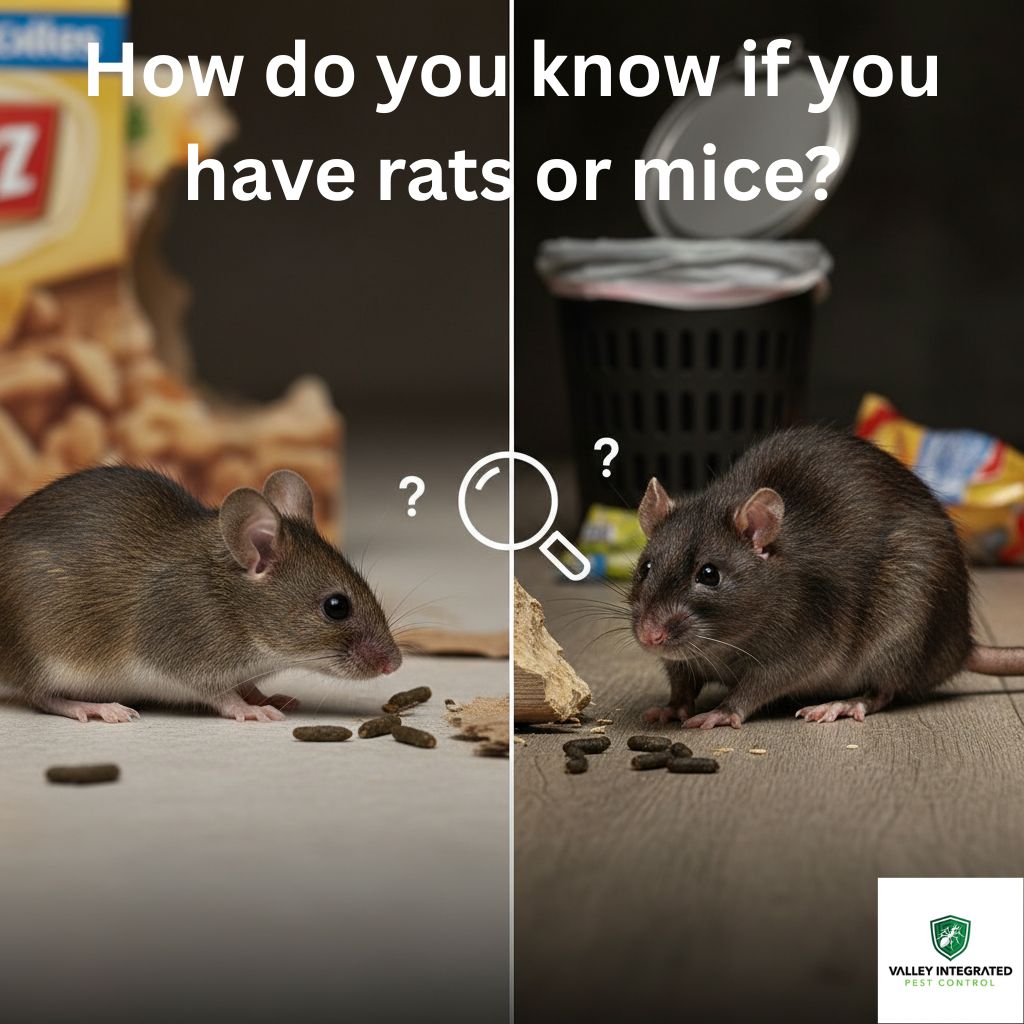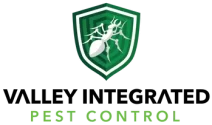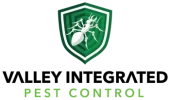The clearest way to know if you have rats or mice is to look beyond size and analyze their behavioral signatures. Mice are curious climbers that leave small, scattered droppings and explore new traps quickly. Rats are cautious burrowers that leave larger, concentrated droppings, cause more significant gnawing damage, and fear new objects in their environment, requiring a different removal strategy.
It’s Not Just a Pest, It’s a Pattern: Decoding Your Rodent Problem
Hearing scratching noises in the walls at night or finding small droppings in kitchen cabinets is unsettling. The immediate question is always the same: is it a large mouse or a small rat? While a rat vs. mouse size comparison is a starting point, it’s often misleading. A juvenile rat can easily be mistaken for an adult house mouse. Relying on a fleeting glimpse is a recipe for a failed pest control strategy.
Successfully identifying your uninvited rodent guest isn’t about a simple checklist of physical traits. It’s about decoding their distinct behavioral ‘signatures’—climbing vs. burrowing, curiosity vs. fear. These behaviors dictate their movement through your home, the evidence they leave behind, and the entirely different strategies required for effective removal and long-term prevention. Understanding these differences is the first and most critical step toward reclaiming your peace of mind.

The Forensic Evidence: What Droppings and Damage Reveal
Before you ever see the rodent itself, you’ll see the evidence it leaves behind. These signs are not just proof of a problem; they are clues that tell a detailed story about the pest you are dealing with.
Reading the Droppings: Size, Shape, and Scatter
Rodent droppings are the most common sign of an infestation. It’s crucial to know how to tell the difference between rat and mouse droppings, but also how they are distributed.
- Mice: A single mouse can produce 50-80 droppings per day. Mouse droppings are small (about 1/8 to 1/4 inch long), black, and have pointed ends, resembling grains of rice. You’ll find them scattered randomly in areas they frequent, like under sinks, in pantries, and along baseboards. This scattered pattern is a hallmark of their “grazer” behavior, as they nibble and defecate as they travel. Be careful not to confuse mouse droppings vs. cockroach droppings, which are smaller, ridged, and often found on walls.
- Rats: How big are rat droppings? They are significantly larger. Norway rat droppings are about 3/4 inch long, brown, and have blunt, capsule-like ends. Roof rat droppings are a bit smaller (around 1/2 inch) and have pointed ends. Unlike mice, rats tend to use a communal “toilet” area, so you’ll find their droppings in concentrated piles in more hidden locations. Seeing what look like baby rat droppings might lead you to believe you have mice, but their blunt shape is a key giveaway.
Gnaw Marks: The Telltale Teeth Marks
Related: What kind of damage can rodents cause to your home?
Both rats and mice have incisors that never stop growing, forcing them to constantly gnaw on hard surfaces to file them down. This is why you may find chew marks on electrical wires, wood, or even plastic pipes. Both rats and mice gnaw to create better access points and maintain the length of their teeth, leaving distinct marks as a sign of their activity.
- Mouse Gnaw Marks: Due to their smaller size, mouse gnaw marks look like small, clean-cut holes or tiny scratches. Think of holes the size of a dime in a cereal box or faint, paired grooves on a baseboard. The damage, while frustrating, is typically less severe.
- Rat Gnaw Marks: What do rat gnaw marks look like? They are large, rough, and show significant power. A rat can chew through wood, plastic, aluminum siding, and even low-quality concrete. Holes in walls from rodents are more often the work of rats. The marks are larger and more shredded in appearance, indicating a more destructive pest.
Think Like a Rodent: Uncovering Their Movement and Psychology
Related: What are the most common rodents in Fresno?
Understanding how these pests think and move is the secret to predicting their next move and implementing an effective control strategy. Their core psychology—one of cautious fear versus bold curiosity—is the most important difference between rat and mouse behavior.
Vertical vs. Horizontal: Are They Climbers or Burrowers?
Where you find evidence of rodent activity is a major clue. Are you hearing rodent sounds in the ceiling, or are the signs of rodent activity outside, near the foundation?
- Mice are Climbers: House mice are expert acrobats. If you’re wondering, “what kind of rodent is in my attic?” a mouse is a prime suspect. They are “frighteningly good climbers” that can scale brick walls and use climbing plants or ivy as ‘natural ladders’ to reach higher entry points. Evidence of mice in the kitchen often points to entry points around pipes under the sink or gaps behind appliances. Their ability to climb makes upper floors and attics just as vulnerable as the ground floor.
- Rats are Burrowers (and Climbers): While some species like the roof rat are excellent climbers (hence their name), the common Norway rat is a master of the ground game. Norway rat behavior patterns are centered on burrowing. They create extensive tunnel systems, often found in gardens, under foundations, or in crawl spaces. Rats are most commonly seen in trees, along wires and fences, or running along outdoor pathways. Mice are more often seen inside homes and other buildings. If you find greasy rub marks on baseboards or along foundation walls, these are signs of rats using the same path repeatedly.
Curiosity vs. Caution: The Key to Effective Trapping
This psychological difference is why a DIY trapping plan can fail if you misidentify the pest.
- Mice are Curious: A house mouse is naturally inquisitive. When a new object, like a trap, appears in its territory, it will often investigate it within the first day. This makes trapping mice relatively straightforward. Placing several traps baited with a pea-sized amount of peanut butter or chocolate along their known travel paths can yield quick results.
- Rats are Neophobic: Rats, especially the Norway rat, are highly neophobic, meaning they have an intense fear of new things. Placing a new trap in their environment will cause them to avoid it for days, or even weeks. An effective rat trapping strategy requires a multi-day acclimation period. You must place the unset trap (baited but not armed) in their path for several days to let them get comfortable with it as a food source before you set it.
Understanding the True Risk: Feeding Habits and Nesting Clues
How rodents eat and where they live inside your home can reveal the scale of the infestation and the specific health risks they pose.
Grazers vs. Hoarders: How They Contaminate Your Home
- Mice are ‘Grazers’: Mice nibble on many different food sources throughout the night. They will chew a small hole in a bag of rice, take a few grains, and move on to the next thing. This behavior means a small mouse population can cause widespread rodent contamination signs. Is seeing one mouse a bad sign? Yes, because they multiply quickly and their grazing habits mean they can contaminate dozens of food items in a single evening.
- Rats are ‘Hoarders’: Rats have larger appetites and tend to carry food away to hoard in their nests or other hidden locations. Finding a hidden cache of pet food, nuts, or other stolen goods is a strong sign of a rat infestation in the house. This hoarding behavior indicates a more established, long-term problem with a central nest.
Identifying Rodent Nests: Where to Look and What You’ll Find
Both rodents will build nests to raise their young, and discovering one is a clear sign your problem is growing. A key behavioral signature of an infestation is finding nesting material, which can include shredded paper, fabric, or dried plant matter.
- Mouse Nests: What does a mouse nest look like? It is typically a small, ball-like structure about 4-6 inches in diameter, made of soft, finely shredded materials like paper, cotton, or insulation. You can find them in undisturbed places like inside wall voids, behind appliances, in cluttered storage areas, or tucked away in a drawer.
- Rat Nests: Rat nests are much larger and less tidy. Roof rats often nest high up in attics, rafters, or trees, while Norway rats build their nests in burrows underground or in the lowest levels of a building. Identifying rodent nests in insulation in your attic is a common sign of a roof rat problem.
Answering Your Key Questions About Rodent Infestations
When facing a rodent problem, certain questions come up time and again. Here are direct answers based on our decades of experience.
What are the signs of having rats?
The primary signs are large, blunt-ended droppings found in concentrated piles; significant gnaw marks on wood or plastic; greasy rub marks along walls; visible burrows around your foundation; and sounds of scurrying or gnawing in walls, especially at night.
What does your house smell like if you have rats?
A large or long-standing rat infestation creates a distinct, musky odor from their urine and droppings. What does mouse urine smell like? It’s similar but often described as having a stronger ammonia-like tinge due to its concentration. A stale, musty smell can permeate the home, and the smell of a dead rodent in the wall is a uniquely foul, sweet-and-sour odor of decay that is impossible to ignore.
How to tell the difference between rats and mice?
Beyond the obvious size difference, the key is behavior. Mice are climbers who leave small, scattered, pointed droppings. Rats are often burrowers who leave large, concentrated, blunt droppings. Mice are curious about new traps; rats are fearful of them.
Where do rats go during the day?
Rats are primarily nocturnal. During the day, they retreat to their nests to rest and care for young. These nests are typically in hidden, undisturbed locations like deep inside burrows, in wall voids, under debris piles, or in dense vegetation outdoors. They emerge at dusk to forage for food and water.
Making the Right Choice for Your Needs
Understanding these behavioral differences is not just academic—it directly informs the right course of action for your specific situation. There is no one-size-fits-all solution; the correct approach depends on your goals and the evidence you’ve found.
For The Anxious Homeowner
You saw droppings and now you can’t stop thinking about what’s lurking in your home. Your priority is immediate peace of mind. Your first step is to calmly assess the evidence. If you’ve found small, rice-shaped droppings scattered in a pantry or drawer, you are likely dealing with mice. If you’ve found larger, capsule-shaped droppings concentrated in a hidden corner of the garage or basement, it’s more likely rats. This initial identification helps you understand the scope. Mice can be managed with strategically placed traps due to their curious nature, but a rat sighting often indicates a larger, more hidden problem that requires a more robust strategy. Knowing the difference calms fear and provides a clear direction.
For The DIY Investigator
You’re actively trying to solve this problem yourself. Your focus should be on exploiting the rodent’s psychology. If your investigation points to mice (climbing behavior, scattered droppings), your strategy is about trap placement. Place numerous mouse traps directly in their pathways, such as along baseboards where you’ve seen droppings. Because they are curious, you should see results quickly. If the evidence points to rats (neophobia, ground-level activity, rub marks), your trap placement is a patient game. You must use larger, more powerful rat traps and leave them baited but unset for 3-5 days. This acclimation period is non-negotiable for overcoming their fear of new objects. Matching your trap strategy to the rodent’s core behavior is the difference between success and months of frustration.
For The Proactive Property Manager
Your goal is not just removal but long-term prevention. You need a holistic strategy focused on exclusion. Understanding rodent behavior is key to identifying and sealing entry points. For mice, your inspection must be vertical. Check for gaps around utility lines entering the building, vulnerabilities in the roofline, and gaps under eaves. Mice only need a hole the size of a dime. For rats, your focus is horizontal and ground-based. Inspect the building’s foundation for cracks, look for burrowing activity along the exterior, and secure ground-level doors and vents. Remember that the presence of garbage and refuse provides an environment for rats to thrive, so strict sanitation protocols are your first line of defense against a rat infestation.
Ultimately, a successful rodent control plan is built on a correct initial assessment. By moving beyond a simple size comparison and analyzing the distinct behavioral patterns of droppings, damage, and movement, you can develop a strategy that is not only effective but provides lasting protection for your property. For a comprehensive inspection and a tailored management plan that addresses the unique pressures on your home or business, trust the experts at Valley Integrated Pest Control in Fresno, CA. Contact our team today for a consultation and take the first step toward a rodent-free environment.






